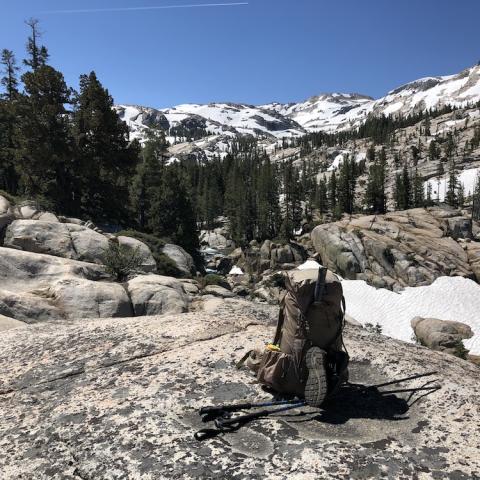
Spring cycling in Yellowstone National Park near the Hoodoos/NPS, Jacob W. Frank
With snow being plowed and melted by warmer temperatures, some roads in Grand Teton and Yellowstone national parks are being opened to cyclists, rollerbladers, and folks just looking to stretch their legs.
In Grand Teton, the Teton Park Road between the Taggart Lake Trailhead and Signal Mountain Lodge is cleared of snow and open to non-motorized recreational uses. But recreationists are cautioned that snow and ice may persist on some sections of the roadway creating slick conditions.
Recreationists should also be alert for park vehicles that periodically travel this roadway for administrative purposes as spring opening operations continue. Road crews may be clearing auxiliary roads and wayside areas, and visitors are cautioned to keep a safe distance from rotary plows and other heavy equipment.
Several portable restrooms are temporarily located along the road for recreationists. Dogs are permitted on the Teton Park Road. Dog owners are required to use a leash no longer than six feet in length and are required to clean up after their dogs. Waste disposal bag stations are located at each end of the road. Electric bicycles are not allowed on the Teton Park Road when it is closed to motorized use.
This 14-mile section of the Teton Park Road is scheduled to open to public motor vehicle traffic on Wednesday, May 1.
The paved multi-use pathways in the park are open whenever they are predominately free of snow and ice. The Craig Thomas Discovery and Visitor Center in Moose will open Monday, April 1. It will be open daily from 10 a.m. to 4 p.m.
In Yellowstone, bicyclists willing to brave the unpredictable elements of spring in the park beginning Friday can ride 49 miles of park roads from the West Entrance to Mammoth Hot Springs. As conditions allow, bicycles will also be permitted from the East Entrance to the east end of Sylvan Pass, and the South Entrance to West Thumb. Check the Spring and Fall Bicycling web page for road segment status.
There is no bicycle access to Old Faithful or Canyon until those interior park roads open to public motorized vehicle access later in April. Electric or pedal-assist bikes are not allowed on park roads when they are closed to motorized, public travel. Check the Park Roads web page for 2019 spring opening dates to public vehicles.
A spring bicycle trip in Yellowstone, park staff said, must be taken seriously for these reasons:
- Snowplows and other motorized vehicles operated by park employees or construction workers on the road
- Quickly changing weather conditions
- Temporary road closures due to weather conditions
- Snow and ice covering sections of road
- Roads lined with tall snow banks and pullouts packed with snow
- Wildlife on roads
- No services available
- Anticipate encountering bears, bison, elk, wolves, and other wildlife.
- Turn around if wildlife are on the road. It’s illegal to approach wildlife, within any distance that disturbs or displaces the animal.
- Carry bear spray.
- Stay out of closed areas.
- Ride single file and follow all other rules of the road.
- Plan for self-rescue or repair. Cell phone coverage throughout the park is sparse and unreliable for communicating emergencies.
- Prepare to spend an extended period of time in winter conditions in the event of a mechanical breakdown, injury, or other emergency.




 Support Essential Coverage of Essential Places
Support Essential Coverage of Essential Places







Add comment